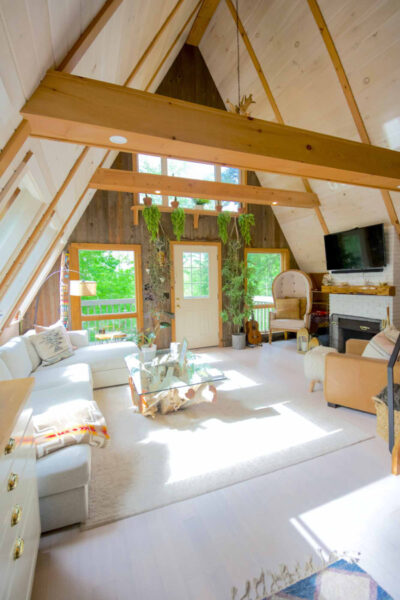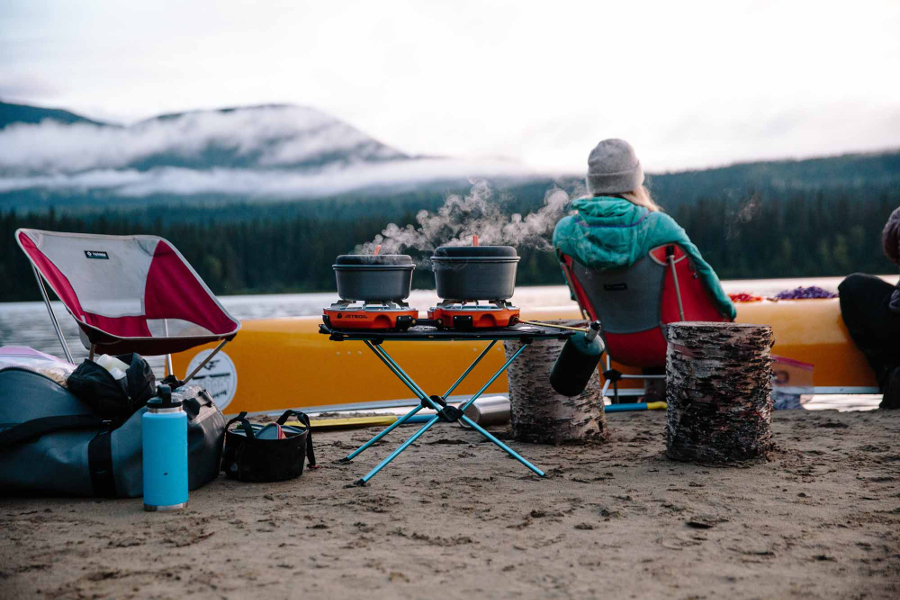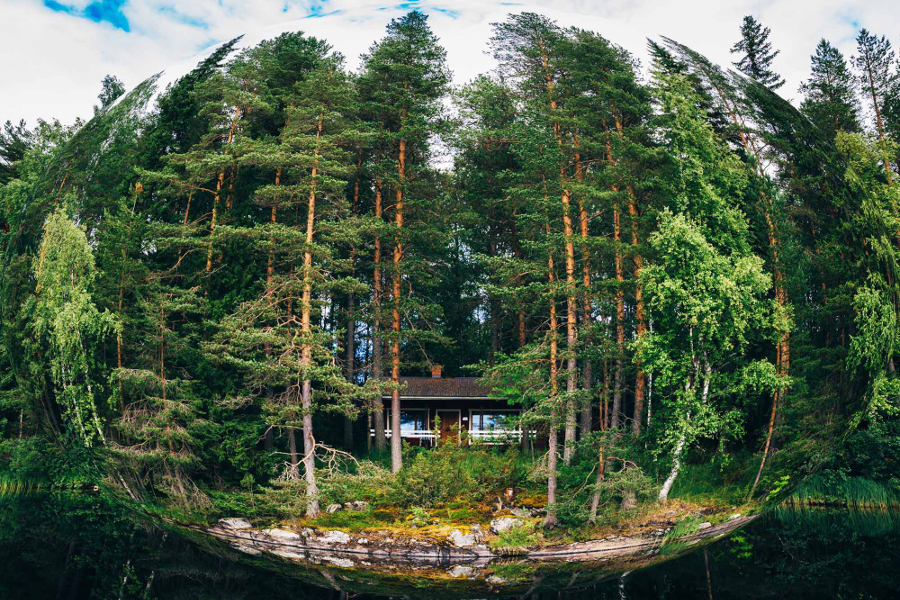Do you see the silver lining? Indicators are that our lifestyles will be different, and possibly even more Earth-friendly, in a post-pandemic world. Here’s a look into our possible future.
By Steve Threndyle
Although 2019 was a year to remember for Greta Thunberg and climate action, 2020 was ironically the year that the pandemic changed everything. Work-at-home rules and travel restrictions (not to mention supply chain interruptions and our newfound appreciation for fresh over circulated air) have led to a greenhouse gas reduction that climate marches and hectoring Hollywood stars couldn’t achieve.
While we still mourn the global deaths of millions and look forward to mass vaccination in 2021, many of the habits that we’ve embarked upon will undoubtedly stick around.

REAL ESTATE
Our primary residences and recreational properties have blurred: some moved full-time to second homes, or bought a rural property as a temporary residence and long-term investment. Work-from-home professionals realized, “If I can do this job anywhere, why would I pay for a box in a downtown highrise when I can own an acreage over on the Island?”
The flight to smaller communities, but also to the conversion of Airbnb-type short-term rentals to long-term leases, has created urban vacancies and softened downtown condo markets, enabling first-time buyers (driven by fear of missing out on record-low interest rates) to enter the market.
Home renovations boomed, as we plowed money that we might have spent on a summer European or Christmas tropical vacation into remodeling spare bedrooms into offices, adding bathrooms and even winterizing decks into outdoor rooms or year-round oases.
Commercial needs have evolved, too, as the warehousing and transportation of groceries and other retail products have created new demands. The pandemic has also accelerated the repurposing of low- to mid-market shopping malls into more walkable mixed-use residential-commercial developments with the potential to reduce car trips and greenhouse gas emissions.
Crystal ball: Post pandemic, look for the work from home trend to continue, and for builders and contractors to push next-level upgrades: replacing dated HVAC systems, adding triple-pane windows or solar panels, installing energy-efficient lighting and more, some encouraged by provincial or federal grant programs. Mini prefab cabins (especially those under 150 square feet, which can often escape planning and permitting scrutiny) that function as home offices, studios or playrooms will increase in popularity.
Developers will continue to eye older condo buildings with redevelopment potential (if not, demolition), given that the B.C. Strata Property Act changed in 2016 to lower the threshold for strata members to approve upgrades. New home builds, especially single-family residences, will focus on “high-performance homes,” featuring rapidly improving and cheaper systems. For instance, Kelowna’s Wilden Homes has constructed traditional and new-generation efficient homes side by side to show how paying upfront for features like geothermal air and heat exchange actually saves money down the road.
Fear of extended care and nursing home settings could create more extended-family housing demand, a development that will surely lead to more mobile homecare and nursing services as well.
TRANSPORTATION
During the spring and summer months, a lot of second cars were furloughed in favour of bikes, both electric and traditional. General uneasiness around confined spaces like public transportation, even with social distancing, led to a historic drop in ridership at BC Transit that has yet to fully recover. As a result, front-line workers, tradespeople, landscapers and service workers who could not work from home often took personal vehicles instead of transit.
Crystal ball: Electric bike and vehicle sales are projected to grow by double digits, especially since the B.C. government has committed to phasing out all gas-powered vehicle sales by 2040. Smaller towns and cities will see increased parking meter levies and some residential developments may follow Vancouver’s lead and start to charge homeowners extra for their parking spots. Despite their relatively small populations, many B.C. towns are spread out, and errands like school pick-ups and grocery shopping require car trips. Refugees fleeing larger cities will want the same transit service and walkability they enjoyed as urbanites.
EDUCATION
If “working from home’ was disruptive to the average family, “learning from home,” or attending to the needs of children who couldn’t go to school due to COVID outbreaks, pushed stressed-out families to the limit. The pandemic put virtual classes front and centre, yet unlike work from home, few students and educators see it as a long-term solution. Many “hands-on” careers in high-demand trades, for instance, cannot be successfully taught virtually.
Crystal ball: Colleges and universities have proven to be a real boon throughout Western Canada: institutions like the UNBC (Prince George) and UBC-Okanagan (Kelowna) have greatly diversified the economies there, to say nothing of creating culture. While it’s true that having kids learning from home, and lifelong learners tapping into MasterClass and online certifications from BrainStation, dramatically reduces our environmental footprint, education is a social endeavour as much as it is skills development: we predict a return to the classroom.

RECREATION
Stay-at-home orders invigorated the outdoor recreation industry as hiking boots, tents and paddleboards flew out of stores. Pools and hot tubs had months-long waiting lists. Boating, hunting, fishing and golf showed their highest participant gains in decades. We began exploring backyard trails and parks (at a distance). Though many vacationed in their home province in the summer of 2020, the economic hit to resort towns such as Whistler, Kelowna and Victoria was staggering, and the tourism fallout will probably continue for years.
Crystal ball: Tourism employs more workers in B.C. than forestry, fisheries, mining and agriculture combined. Until international tourists can safely be accommodated through some form of “vaccine passport,” jobs and businesses will not fully recover. Last summer’s lockdown did, however, shine a glaring light at how much recreational facilities (most notably B.C.’s provincial parks system) have been underfunded for decades: $5 million in new money will flow to the construction of new trails and campsites, hopefully preventing long-term overcrowding in both the front and backcountry.
FOOD
Home food preparation, whether it was baking sourdough loaves or cherry pie, assumed an elevated role. Vehicle use went down dramatically, as families were encouraged to do bigger, and fewer, shopping trips. Interest surged in locally grown produce and locally raised meats, which is generally a positive environmental development. To merely survive, restaurants had to pivot to preparing take-out orders, feeding mobile-app delivery systems like Uber Eats and Skip the Dishes, even in smaller cities. One thing’s for sure: you’ll likely be seeing more delivery trucks in your neighbourhood for years to come.
Crystal ball: The rise in both private food and parcel delivery contractors will lead to greater adoption of both EV and EV-assist hybrid vehicles in the future. With a solid customer base, small farmers can adopt increasingly Earth-friendly organic methods. Taken together, the pandemic could lead to greater efficiency and environmental sustainability throughout the food distribution chain.


